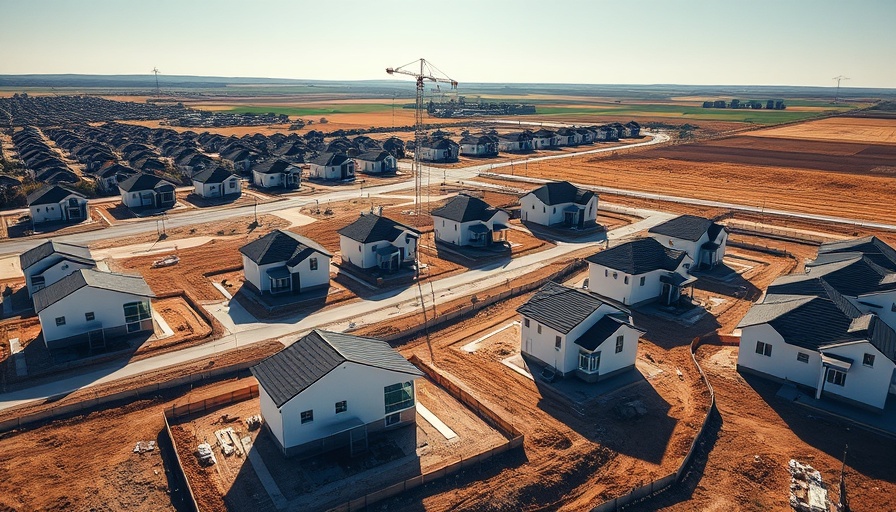
Understanding the Housing Market Standstill in Austin
Austin's housing market is currently facing a significant slowdown, a troubling sign for potential buyers and developers alike. As of now, there are approximately 250,000 home sites that remain undeveloped, representing a bottleneck that frustrates growth and exacerbates an already challenging real estate environment.
Why Are Builders Hesitant?
In conversations with local developers, the consensus is that construction and sales are less optimistic than they’ve been in previous years. Several factors contribute to this pause: rising interest rates, supply chain issues, and increasing construction costs. These all create a perfect storm, discouraging builders from breaking ground on new residential projects.
Comparing Trends: National vs. Austin Market
Looking beyond Austin, the narratives around housing that have been unfolding across the nation provide crucial insights. Many metropolitan areas are experiencing similar slowdowns, raising questions about housing demand across major markets. However, Austin's unique blend of a booming tech scene and young entrepreneurial spirit still promises long-term potential, but only if immediate challenges can be addressed.
Future Predictions: What Lies Ahead for Austin?
While it’s easy to see the current metrics as daunting, they also present an opportunity for insights into future trends. The city, known for its innovation and entrepreneurship, must adapt in order to revitalize its housing market. Potential solutions could include targeted incentives for homebuilders, investments in infrastructure, and a strong push for sustainable housing developments that cater to its diverse population.
Austin's Unique Marketplace: Entrepreneurs and the Housing Demand
At the heart of Austin’s economic dynamism lies its thriving startup ecosystem. The blend of Austin entrepreneurs is continuously shaping the narrative of the local business landscape. Every entrepreneur looking to settle in this hub requires housing, which underscores the connection between the stagnant housing market and the ability to sustain economic growth. Support from local institutions like the Austin Chamber of Commerce and various business incubators could help bridge this gap.
Considering Solutions: Economic Development Collaborations
As the city's developers and residents confront these challenges, they might look to examples from successful urban redevelopment collaborations elsewhere. For instance, cities that have prioritized collaboration between government and private sectors to revitalize underdeveloped areas provide a blueprint for innovation. Associating business growth with thoughtful urban planning could alleviate current bottlenecks.
Conclusion: The Path Forward
While the current situation in the Austin housing market may seem troubling, it also underscores the need for innovative solutions to attract both residents and businesses. By fostering collaboration and leveraging opportunities presented by Austin’s entrepreneurial spirit, stakeholders can work towards resolving existing challenges. This is an invitation to engage with the mechanisms that drive Austin's economic growth because the housing market's revival may just be a matter of strategic partnerships and community involvement.
 Add Element
Add Element  Add Row
Add Row 



Write A Comment